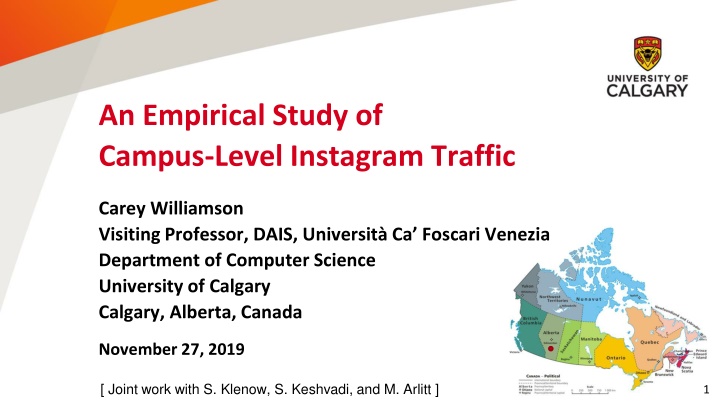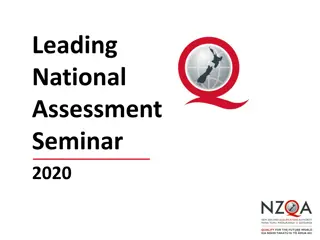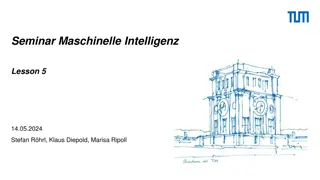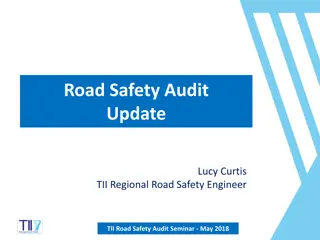
Campus-Level Instagram Traffic Study: Key Characteristics and Network Performance Implications
Explore an empirical study investigating the key characteristics of Instagram traffic at the campus level, including network performance implications. The research aims to inform network simulation models based on active and passive measurement methodologies. Discover insights from analyzing Instagram-related requests and network traffic patterns at the University of Calgary in Alberta, Canada.
Download Presentation

Please find below an Image/Link to download the presentation.
The content on the website is provided AS IS for your information and personal use only. It may not be sold, licensed, or shared on other websites without obtaining consent from the author. If you encounter any issues during the download, it is possible that the publisher has removed the file from their server.
You are allowed to download the files provided on this website for personal or commercial use, subject to the condition that they are used lawfully. All files are the property of their respective owners.
The content on the website is provided AS IS for your information and personal use only. It may not be sold, licensed, or shared on other websites without obtaining consent from the author.
E N D
Presentation Transcript
An Empirical Study of Campus-Level Instagram Traffic Carey Williamson Visiting Professor, DAIS, Universit Ca Foscari Venezia Department of Computer Science University of Calgary Calgary, Alberta, Canada November 27, 2019 [ Joint work with S. Klenow, S. Keshvadi, and M. Arlitt ] 1
Instagram A photo and video sharing service Features: Instagram Explorer Instagram Direct Instagram Stories Instagram TV (IGTV) Live Streaming Monthly Active Users from 2013 to 2018 (in millions) 2
Research Questions What are the key characteristics of Instagram traffic? What are its network performance implications? How can this better inform our network simulation models? 3
Case Study University of Calgary in Calgary, Alberta, Canada 35,000 students (ugrad/grad) 3,000 faculty/staff One week: Sunday March 3, 2019 to Saturday March 9, 2019 4
Methodology 1 of 2: Active Measurement Challenges: Different domain names (e.g., Instagram vs Facebook) Encrypted data (HTTPS) Certificate pinning required (rooted device) App security policies Objective: Study Instagram traffic for 1 user from a single device under test (Android smartphone+Charles) Rationale: Detect IP destinations Identify effects of user interactions Identify app features [ This part of the work was done by PhD student Sina Keshvadi ] 5
Active Measurement Results Over 90% of the Instagram-related requests go to a single IP: 157.240.3.63 Observed DNS host names: i.instagram.com platform.instagram.com instagram.c10r.facebook.com scontent-sea1- 1.cdninstagram.com graph.instagram.com All main features use the same IP address Monitoring this single IP address gives a good estimate (but slight underestimate) of the campus-level Instagram traffic! 6
Methodology 2 of 2: Passive Measurement Objective: Study network traffic at scale Challenges: Complexity of campus network (DHCP, NAT, VPN, BYOD) Traffic capturing process Storage/processing of traces Analysis of large datasets Encrypted traffic (HTTPS) Ethical considerations Rationale: Campus-level traffic characterization Identify traffic behaviour Identify any network anomalies Network performance implications [ This part of the work was done by visiting MSc student Steffen Berg Klenow ] 7
Example of Raw Data Format (Bro Conn Logs) Epoch_Timestamp 1551596628.248886 u29N3fRWgQZb 1.2.3.4 50468 157.240.3.63 443 tcp ssl 165.901378 9053 86515 S3 100 14297 98 90892 1551596628.250997 CThhn41IttYm27 1.2.3.4 50470 157.240.3.63 443 tcp ssl 1551596628.301082 z1RCa3W19Ralf 1.2.3.5 50040 157.240.3.63 443 tcp ssl 329.763400 425964 45413 SF 737 468313 538 73893 1551596628.307782 GcdG3L8hgX7e 1.2.3.6 62558 157.240.3.63 443 tcp ssl 1551596628.316061 CLkeo71KeeiHx1 1.2.3.7 57396 157.240.3.63 443 tcp ssl 209.412519 5239 91968 SF 67 9983 83 94918 1551596628.348089 OhKpI2eBASJOg 1.2.3.7 57397 157.240.3.63 443 tcp ssl 209.388824 7489 914542 S3 454 31736 682 933553 1551596628.502214 Vh9Ev3gHpUSga 1.2.4.1 52990 157.240.3.63 443 tcp ssl 1551596628.504240 pDJJC43UXfYE8 1.2.4.1 52991 157.240.3.63 443 tcp ssl UID Src_IP SPort Dest_IP DPort Prot Svc Duration TCPout TCPin State IPout B_out IPin B_in 3.334059 489 447 RSTO 11 1093 7 1133 0.004667 39 39 SF 4 247 5 263 8.459407 1703 126326 SF 83 6031 99 131482 8.457381 2222 962556 SF 431 24646 719 998714 Hardware: Endace DAG packet capture card (10 Gbps); headers only (not payloads) Software: Bro Intrusion Detection System (IDS) (now called Zeek) We analyze the logs using Vertica (a big data analytics framework available from HP) [ This data collection/analysis infrastructure was designed by Martin Arlitt ] 8
Time Series Illustration of TCP Connection State Additional Results 15
Conclusions On our campus network, a typical weekday of Instagram traffic has: 1 TB of data downloaded 60 GB of data uploaded Third highest bandwidth consumption behind Netflix (6 TB per day) and YouTube (3 TB per day) Highly skewed distributions: high variability (e.g., transfer sizes, throughputs) heavy-tails (e.g., connection durations, transfer sizes) This traffic can have a large impact on a campus edge network! 19
Acknowledgements Financial support for this work was provided by Canada s Natural Sciences and Engineering Research Council (NSERC). A big thanks to University of Calgary Information Technologies (UCIT) for enabling the collection of our network traffic measurement data. 20
Instagram Traffic Anomaly (1 of 3) A brief network router outage for about 80 seconds on Saturday March 9, which affected Instagram traffic, and other network services 22
Instagram Traffic Anomaly (2 of 3) Multiple UCalgary IP addresses partaking in some Instagram video streaming event for about 2 hours on Sat March 9 23
Instagram Traffic Anomaly (3 of 3) Partial outage for Facebook, WhatsApp, and Instagram for several hours on Wed March 13/19 24






















